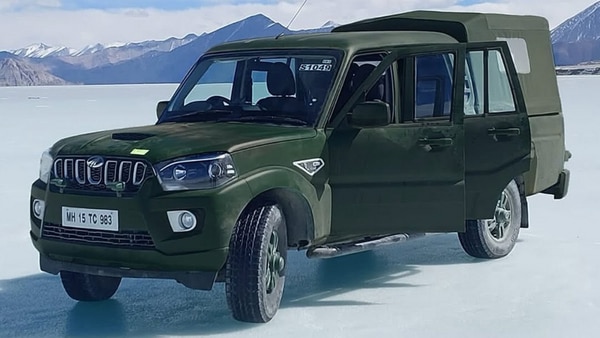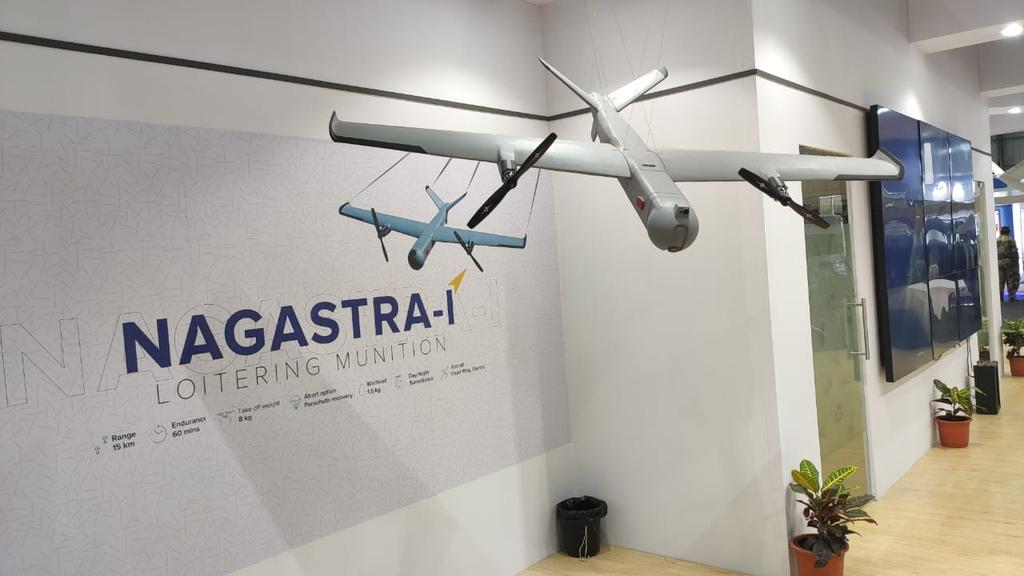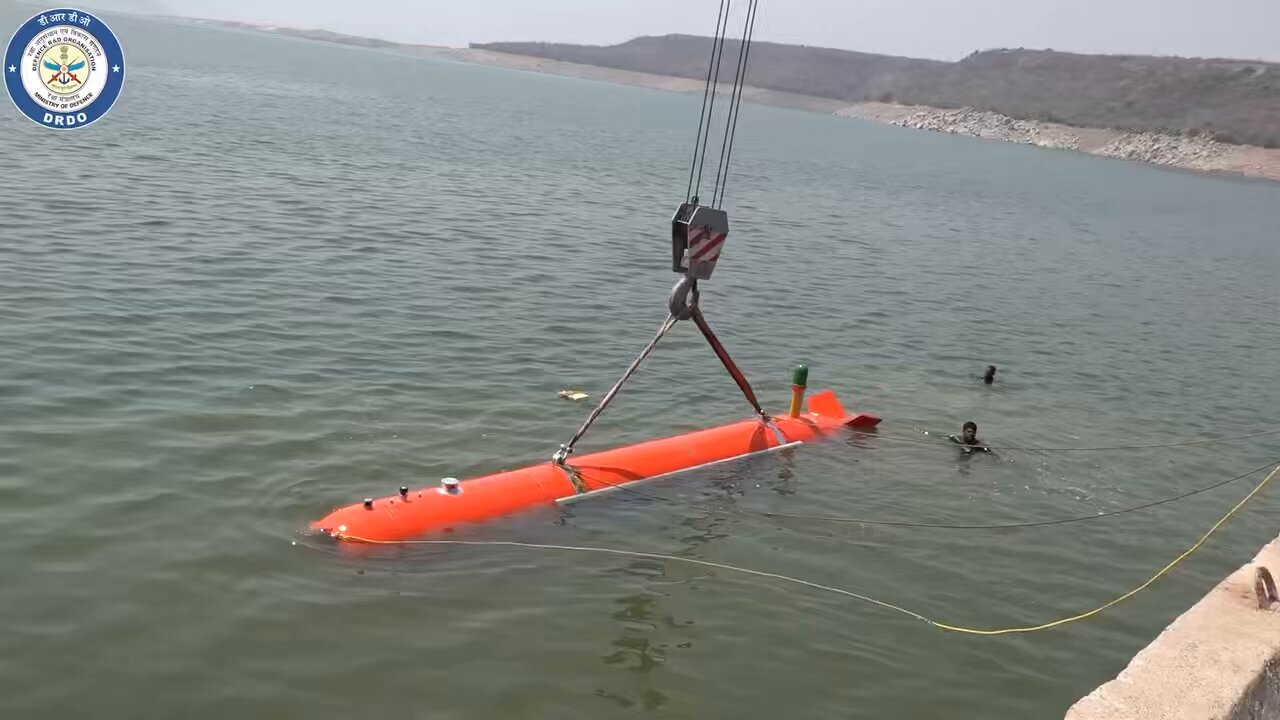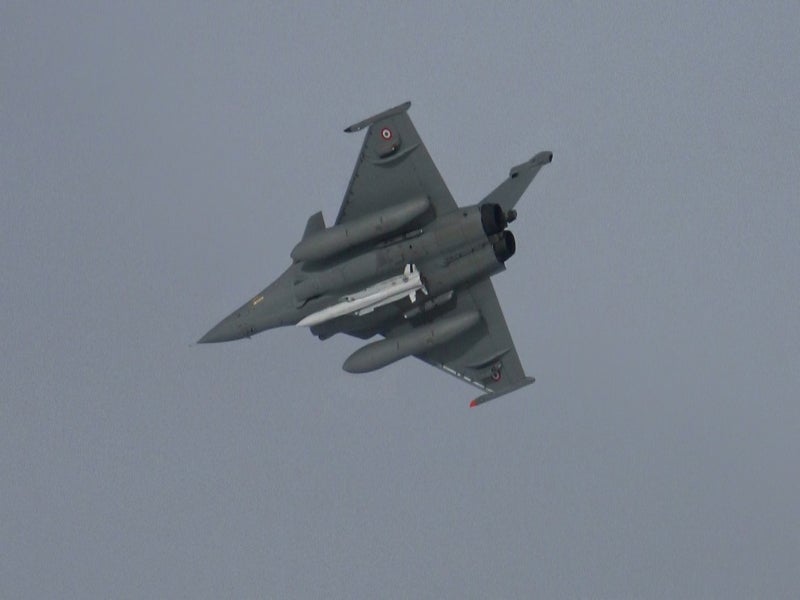AFI
SOURCE: AFI


On the night of March 29, 2025, a heavily secured flatbed truck was observed transporting an armored vehicle under the cover of darkness, sparking intrigue among defence enthusiasts and analysts. The vehicle, shrouded partially with a blue tarp, was captured in a grainy photograph circulating on social media platforms like X, showing it being moved along a well-lit highway.
While the Indian Army frequently conducts such movements to maintain operational readiness, the unidentified nature of this armored vehicle—distinctly not based on the familiar BMP-II platform—has raised questions about a potential new addition to India’s mechanized forces.
Continue readingSOURCE: AFI


In a landmark achievement, the Ministry of Defence (MoD) has, for the first time in recent years, fully utilized its allocated capital budget, leaving no funds unspent. This milestone, announced on April 1, 2025, underscores a significant leap in India’s defence preparedness and financial discipline, with every rupee strategically directed toward bolstering the nation’s military capabilities.
The complete allocation of the capital budget has been channeled into modernizing equipment, enhancing operational readiness, and strengthening the Indian Armed Forces. A key focus of this effort has been the promotion of indigenous defence production, aligning with the government’s #AatmanirbharBharat (Self-Reliant India) initiative. By prioritizing homegrown solutions, the MoD has taken substantial steps to reduce India’s dependence on foreign imports, fostering self-reliance in military technology and hardware.
Continue readingSOURCE: AFI


A U.S. court has dismissed Khalistan separatist Gurpatwant Singh Pannun’s assertion that he successfully served a legal summons to India’s National Security Advisor (NSA), Ajit Doval, during the latter’s visit to the United States on February 12-13, 2025. The ruling came after a judge from the Southern District of New York reviewed a letter from Pannun’s lawyer detailing failed attempts to deliver the notice, reinforcing India’s stance that no such service occurred.
Doval, who accompanied Prime Minister Narendra Modi during the trip, was staying at Blair House, the U.S. president’s official guest residence, under tight security provided by the U.S. Secret Service. Pannun, a dual U.S.-Canadian citizen and leader of the banned Sikhs for Justice group, had hired two process servers and an investigator to deliver the summons, which stemmed from a civil lawsuit he filed in September 2024. The lawsuit accuses Indian officials of orchestrating a failed assassination plot against him, a claim U.S. authorities have linked to an Indian government agent, Vikash Yadav.
Continue readingSOURCE: AFI


The Defence Research and Development Organisation (DRDO), India’s premier defense research body, is set to make a significant mark at Latin America’s leading defense exhibition, LAAD 2025, held in Rio de Janeiro, Brazil, from April 1-4, 2025. This prestigious event provides a global platform for DRDO to display India’s cutting-edge defense innovations, underscoring the nation’s growing stature as a hub of advanced military technology.
Among the standout systems on showcase are the Netra AWACS, Dornier Mid-Life Upgrade (Shyen), Tejas MkII, Guided Pinaka, WhAP 8×8, Low Frequency Dunking Sonar (LFDS-X), Advanced Light Weight Torpedo (ALWT), Very Short Range Air Defence System (VSHORADS), and RudraM-II missile—each a testament to India’s self-reliance under the “Aatmanirbhar Bharat” initiative.
Continue readingSOURCE: AFI


In a significant boost to India’s indigenous defense manufacturing, the Ministry of Defence (MoD) has finalized a historic deal with Hindustan Aeronautics Limited (HAL) for the procurement of 156 Light Combat Helicopters (LCH) Prachand, valued at over ?62,700 crore. Signed on March 28, 2025, this agreement marks the largest-ever order placed with HAL and underscores India’s commitment to self-reliance in defense under the “Make in India” initiative. The first batch of five helicopters is slated for delivery in mid-2028, with production centered at HAL’s state-of-the-art Tumkur facility in Karnataka, purpose-built for the LCH and Light Utility Helicopter (LUH) programs.
The deal, approved by the Cabinet Committee on Security (CCS) chaired by Prime Minister Narendra Modi, allocates 90 LCH Prachand helicopters to the Indian Army and 66 to the Indian Air Force (IAF). These twin-engine, multi-role attack helicopters, designed and developed by HAL, are tailored for high-altitude warfare, a capability honed in response to the operational demands exposed during the 1999 Kargil War. With deliveries scheduled to commence three years from the contract signing—projected for mid-2028—the agreement includes training and associated equipment, ensuring the armed forces are fully equipped to integrate this advanced platform.
Continue readingSOURCE: AFI


In a groundbreaking stride toward sustainable aviation, BluJ Aerospace Private Limited announced on March 29, 2025, the successful testing of its Type IV hydrogen storage tank—a pivotal milestone in the development of hydrogen-based flight. This achievement, coupled with multiple successful ground tests of the company’s hydrogen propulsion system, positions BluJ as a frontrunner in the race to decarbonize the aerospace industry and heralds a promising future for hydrogen-powered aircraft.
Central to BluJ’s progress is the Type IV hydrogen storage tank, a cutting-edge design tailored for aviation’s stringent demands. Unlike traditional metal-based tanks, Type IV tanks feature a lightweight polymer liner reinforced with carbon fiber, enabling them to store hydrogen at high pressure while minimizing weight. This balance of strength and efficiency is critical for aerospace applications, where every kilogram impacts fuel economy, range, and payload capacity.
Continue readingSOURCE: AFI


In a major boost to India’s indigenous defense manufacturing sector, Mahindra Automotive has inked a Rs 2,700 crore contract with the Indian Armed Forces to supply 1,986 Scorpio Pik-Up vehicles. The deal, signed with the Ministry of Defence and announced on March 28, 2025, underscores Mahindra’s growing role in supporting the nation’s military mobility needs while reinforcing the “Aatmanirbhar Bharat” (self-reliant India) initiative.
The agreement, highlighted in a report by Cartoq.com on March 30, 2025, positions Mahindra as a key player in the modernization of the Indian military’s light vehicle fleet. The Scorpio Pik-Up, a versatile single-cab variant of the iconic Scorpio lineup, is designed to meet the demanding requirements of military operations across diverse terrains. With this contract, Mahindra will deliver 1,986 units over the next few years, adding to its already substantial contribution to the armed forces’ mobility solutions.
Continue readingSOURCE: AFI


In a significant milestone for India’s indigenous defense manufacturing, Satyanarayan Nuwal, Chairman of Solar Defence and Aerospace Limited (a subsidiary of Solar Industries), has confirmed the successful completion of an order for 480 Nagastra-1 man-portable suicide drones for the Indian Army.
The delivery, finalized in 2025, follows the handover of the first batch of 120 units last year, marking a pivotal achievement for the company and reinforcing its growing stature in India’s defense sector. The Nagastra-1, a lightweight and precise loitering munition, is designed to neutralize hostile threats with lethal accuracy, showcasing India’s strides toward self-reliance under the “Make in India” initiative.
Continue readingSOURCE: AFI


Former Pakistani Senator Faisal Raza Abidi has once again stirred controversy with a provocative appearance on national television, where he urged Yemen’s Iran-backed Houthi rebels to expand their missile and drone attacks beyond Israel to include India. Abidi, known for his fiery rhetoric and unfiltered commentary, claimed that India is among the “biggest supporters of the Jews” and accused the country of supplying Israel with weapons to sustain the ongoing conflict in Gaza.
His remarks, delivered with characteristic intensity, have reignited debates about his political stance, the role of inflammatory rhetoric in Pakistan’s public discourse, and the broader implications of involving external militant groups in regional rivalries.
Continue readingSOURCE: AFI


A recently surfaced undated video featuring Muhammad Yunus, the Nobel laureate and interim Chief Adviser of Bangladesh, has ignited a firestorm of debate and concern in India. In the clip, which has gone viral across social media platforms as of March 31, 2025, Yunus is heard stating, “The Seven Sisters are the landlocked region of India. They have no way to reach out to the ocean, and we [Bangladesh] are the only guardians of the ocean.” These remarks, attributed to Yunus—who assumed power in Bangladesh following what critics describe as an illegal power grab after the ousting of Prime Minister Sheikh Hasina in August 2024—have raised alarm bells in India.
The statement is being interpreted as a veiled warning, especially given recurring calls from Bangladeshi student leaders and politicians for the annexation of India’s northeastern Seven Sisters to form a so-called “Greater Bangladesh.”
Continue readingSOURCE: AFI


The Indian Air Force (IAF) stands at a critical juncture as it seeks to modernize its fleet and bolster its strategic capabilities amid evolving regional threats. While the IAF has made strides in acquiring advanced fighter jets and missile systems, its pace of securing approvals for large-scale strategic programs from the Ministry of Defence (MoD) often lags behind the urgency demanded by the geopolitical landscape.
In contrast, the Indian Navy has demonstrated remarkable agility in navigating bureaucratic hurdles and achieving rapid progress in its strategic initiatives—most notably with its Nuclear Attack Submarine (SSN) program and the K-series Submarine-Launched Ballistic Missile (SLBM) program. The IAF could significantly benefit from adopting the Navy’s playbook to expedite its own high-priority projects.
Continue readingSOURCE: AFI


In a significant stride toward bolstering India’s underwater defense capabilities, the Naval Science and Technological Laboratory (NSTL), a premier research arm of the Defence Research and Development Organisation (DRDO), has successfully tested its High Endurance Autonomous Underwater Vehicle (HEAUV) in a lake environment.
The trials, conducted as part of the vehicle’s ongoing development, demonstrated flawless performance across multiple runs, validating its dynamics in both surface and submerged conditions. With perfect functioning of its sonar and communication systems, the HEAUV is emerging as a promising asset for India’s naval ambitions, showcasing the nation’s growing prowess in indigenous defense technology.
Continue readingSOURCE: AFI


In a landmark development for India-US nuclear collaboration, the United States Department of Energy (DoE) has granted regulatory approval to Holtec International, a New Jersey-based firm, to design and build nuclear reactors in India. Announced on March 26, 2025, this authorization allows Holtec to share unclassified Small Modular Reactor (SMR) technology with three Indian entities: its regional subsidiary Holtec Asia, Tata Consulting Engineers Ltd, and Larsen & Toubro Ltd (L&T). This breakthrough, nearly two decades after the signing of the India-US Civil Nuclear Agreement in 2007, marks a significant step toward unlocking the commercial potential of the long-stalled nuclear partnership, aligning with India’s clean energy ambitions and deepening bilateral ties.
The DoE’s approval falls under the stringent “10CFR810” regulation of the US Atomic Energy Act of 1954, which governs the transfer of nuclear technology. Previously, US companies were permitted to export nuclear equipment to India but were barred from manufacturing or designing reactors locally—a restriction that hindered progress under the 2007 agreement, also known as the 123 Agreement. The March 26 authorization lifts this barrier, enabling Holtec to collaborate with Indian firms on the development of SMRs, a next-generation nuclear technology poised to transform the global energy landscape.
Continue readingSOURCE: AFI


The Indian Air Force (IAF), tasked with the critical responsibility of delivering nuclear weapons in retaliation as part of India’s nuclear triad, relies heavily on its fleet of fighter jets to execute this mission. Currently, the IAF’s nuclear delivery mechanism involves aircraft such as the Mirage 2000, Jaguar, and potentially the Rafale, equipped with gravity-based nuclear bombs.
This approach, however, necessitates that these aircraft fly over or near their target areas, exposing them to advanced enemy air defenses and increasing the risk of mission failure. As regional security dynamics evolve and adversaries bolster their air defense capabilities, it’s time for the IAF to transition to air-launched nuclear-capable missiles—offering a safer, more flexible, and strategically superior deterrent.
Continue readingSOURCE: AFI


The air-launched BrahMos-NG (Next Generation), a 1.3-ton supersonic cruise missile capable of reaching speeds of Mach 3.5, is generating significant buzz on the international stage. With its first test flight slated for 2026, this Indo-Russian anti-ship and anti-ground weapon system has already piqued the interest of over a dozen countries. The missile’s promise of speed, precision, and adaptability is turning heads, particularly as subsonic cruise missiles—commonly offered for air-launched platforms—have exposed vulnerabilities in contested airspace, a lesson starkly illustrated by the ongoing Ukraine-Russia war.
Developed by BrahMos Aerospace, a joint venture between India’s Defence Research and Development Organisation (DRDO) and Russia’s NPO Mashinostroyeniya, the BrahMos-NG builds on the success of its predecessor, the BrahMos missile, which has already secured a reputation as one of the world’s fastest supersonic cruise missiles. Weighing just 1.3 tons—half the weight of the original BrahMos—and designed for a range of up to 290 km (extendable to 450 km with upgrades), the NG variant is compact enough to be integrated into a variety of platforms, including lighter fighters like India’s Tejas, as well as heavyweights like the Su-30 MKI and Rafale. Its Mach 3.5 speed and reduced radar cross-section make it a formidable option for both anti-ship and land-attack roles.
Continue reading